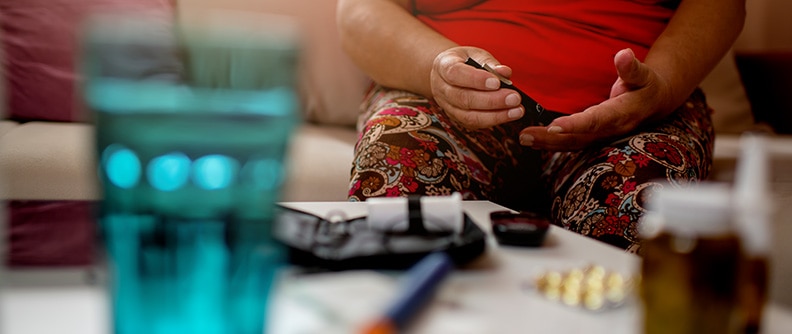Insulin is a hormone the body makes to control the level of glucose (sugar) in the blood. It lowers blood sugar by allowing glucose to leave the bloodstream and enter body cells. Without enough insulin, the level of glucose in the bloodstream can become too high.
Everyone needs insulin to properly turn food into energy. People without diabetes make enough of their own insulin to keep their blood sugar at healthy levels all the time.
People with type 1 diabetes no longer make insulin of their own. Instead, they need to use one or more types of insulin to keep their blood sugars levels close to the healthy range. Many people with type 2 diabetes need to take insulin shots as well to help them get their blood sugar levels into a safe range.
Deciding how much insulin to take
The amount of insulin a person needs depends on:
- Body weight
- Percentage of body fat
- Activity level
- Diet
- Other medicines
- Emotions and stress
- General health
- Type of insulin
- Amount of Insulin resistance
When you first start taking insulin shots, your doctor might ask you to change the amount you take or the time you take it. You and your doctor or diabetes provider will base these changes on the results of your blood sugar readings. You'll need to adjust until you find the dose and schedule that works best for you.
Each person's need for insulin is different:
- Some people can get their blood sugar into a safe range with one shot of insulin a day.
- Some people start by using just one shot of insulin a day, but many people need more than one shot per day.
- Your blood sugar, not the amount or type of insulin you take, is the best way to judge how well you are doing. If you take several insulin shots a day or use more than one type of insulin, it doesn't mean your diabetes isn't in good control.
If your blood sugars are not within your target range, talk to your doctor about adjusting your diabetes medicines.
Types of insulin
The types of insulin are listed below. The first word is the generic name and the second word is a brand name under which the insulin is sold.
insulin lispro (Humalog)
insulin aspart (NovoLog)
Regular insulin (Humulin R, Novolin R) U-100
Regular insulin (Humulin R) U-500
NPH insulin (Humulin N, Novolin N)
insulin glargine (Lantus)
Novolin 70/30 (70% NPH + 30% Regular)
Humulin 70/30 (70% NPH + 30% Regular)
Basal (background) insulin
Some types of insulin work continuously, up to 24 hours, which is similar to how a normal pancreas produces insulin. Continuously acting insulin is called background or basal insulin. Basal insulin is slowly absorbed and is long lasting, which means active from 10 to 24 hours, depending on which kind of basal insulin you use.
Background or basal insulin includes:
- NPH: Starts to act about 2 hours after taking, peaks at 6 to 8 hours, lasts 10 to 16 hours.
- Glargine Starts to act about 2 hours after taking and can last 20 to 24 hours.
Mealtime insulin
These types of insulin are designed to quickly take care of the sugar a person eats. These types of insulin are fast acting and don't last very long.
Mealtime insulin includes:
- Aspart: Starts to act in 10 to 20 minutes, peaks in 30-60 minutes, lasts 3-4 hours.
- Lispro: Starts to act in 10 to 20 minutes, peaks in 30-90 minutes, lasts 3-4 hours.
- Regular: Starts to act in 30 to 60 minutes, peaks in 2 hours, lasts 5-8 hours.
Combination insulin
These are mixtures of long-lasting and fast-acting insulin. Manufacturers claim that the combination gives the benefit of both actions. However, the most likely effect is later action with a stronger peak.
Combination insulin includes 70/30: 70 percent NPH insulin and 30 percent regular insulin.
Other combinations of insulin are available on the market, such as NPH and Humalog mixtures and NPH and NovoLog mixtures. These are designed for convenience because fewer shots are needed. Combinations must be carefully tailored to the individual, if used at all.
Preparing and injecting insulin
Learning how to prepare and take insulin is a very important part of treatment and self-management. Make sure you know how to give yourself the right kind and amount of insulin at the right time. If you're not sure, ask a member of your health care team to show you how to do it correctly.
